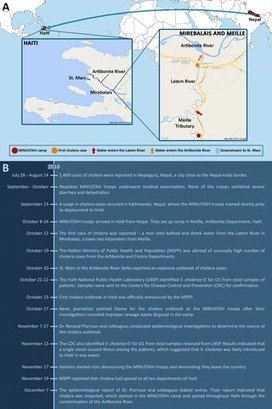The 2010 Cholera Outbreak in Haiti: How Science Solved a Controversy
See on Scoop.it – Virology and Bioinformatics from Virology.ca
On January 12, 2010, a catastrophic 7.0 magnitude earthquake struck Haiti, affecting 3,500,000 people [1], [2]. This severely damaged an already marginal public sanitation system, creating ideal conditions for outbreaks of major infectious diseases. In October 2010, nine months after the earthquake, an outbreak of cholera started, which quickly spread all across the country [3]. As of January 7, 2014, 8,534 deaths and 697,256 cholera cases have been reported by the Haitian Ministry of Public Health and Population [4]. Prior to 2010, there was no reported history of cholera in Haiti, despite devastating outbreaks in the Caribbean region in the 19th century [5]. Many wondered where the cholera in Haiti came from. Two hypotheses as to its origin were presented. The climatic hypothesis argued that nonpathogenic Vibrio cholerae, indigenous in the coastal waters of Haiti, was given the right environmental circumstances and evolved into a pathogenic strain [6]. On the other hand, the human transmission hypothesis suggested that cholera was introduced to Haiti by individuals infected in a foreign country.
See on www.plospathogens.org
